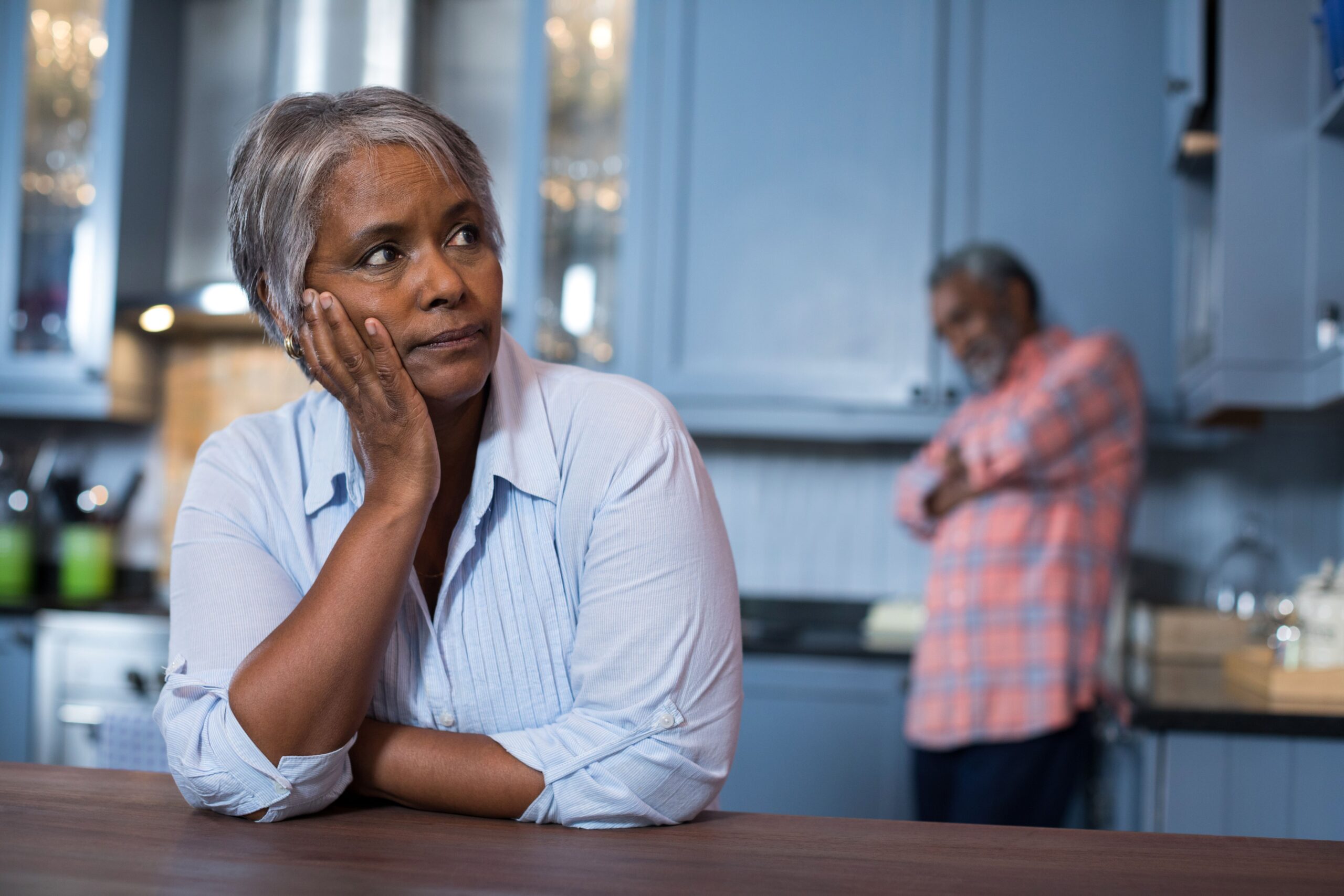
The Personal Burden of Endometriosis
Last week we looked at the direct financial burden of endometriosis, including the loss of education, loss of productivity at work and home, and loss of income. Today we look at the personal burden of endometriosis- the altered relationships with family and friends, the pain and suffering, the ill effects on mental health, and the loss of who we feel we are as a person because of it.
Pain and fatigue can limit our ability to function and the quality of our life experience (Missmer et al., 2021). Our ability to maintain relationships can be difficult, especially when others do not understand the impact that endometriosis has on us. Much research has shown the effect on intimate partner relationships due to the interference with sexual health (Missmer et al., 2021). Not as many studies have been done on the effects of parenting with endometriosis; however, in our Facebook group Nancy’s Nook, many of you have shared the significant effect endometriosis has had on the ability to function as a parent. These limitations imposed from our illness can affect our mental health as well.
In studies, people with endometriosis express “feelings of worthlessness, guilt, and frustration connected with disease-related limitations on participation in daily activities, social functioning, independence, and interpersonal relationships” as well as frustration “from a woman’s inability to manage or predict her pain and the feeling that endometriosis/endometriosis-associated pain controls her life” (Missmer et al., 2021). Add to this the burden of the “perception that others (even healthcare professionals) consider what they are experiencing to be ‘all in their heads’” (Missmer et al., 2021). The struggle is real. And it is no wonder that many feel a loss of who they are as a person because of it.
On a positive note, a systematic review and meta-analysis, as well as other studies, reveal that surgery for endometriosis does improve quality of life (Arcoverde et al., 2019; Parra et al., 2021). Another study reports that “laparoscopic surgery is associated with improved quality of life and emotional well-being compared to medical therapies” and cautions that “although the GnRH agonists are effective in reducing endometriosis symptoms, they are often associated with anxiety and depression during treatment” (Laganà et al., 2017). To help manage symptoms, one study that surveyed people with endometriosis found that “heat (70%), rest (68%), and meditation or breathing exercises (47%)” helped and to a lesser degree “yoga/Pilates, stretching, and exercise” (Armour et al., 2019). Changes in diet, individualized to your specific needs, can help with symptom management for some (Karlsson, Patel, & Premberg, 2020). Other things such as acupuncture have been helpful to some as well. Mental healthcare is important to our well-being and should not be neglected either.
The impact endometriosis has on our lives is significant. Know that you are not alone.

References
Arcoverde, F. V. L., de Paula Andres, M., Borrelli, G. M., de Almeida Barbosa, P., Abrão, M. S., & Kho, R. M. (2019). Surgery for endometriosis improves major domains of quality of life: a systematic review and meta-analysis. Journal of minimally invasive gynecology, 26(2), 266-278. Retrieved from https://doi.org/10.1016/j.jmig.2018.09.774
Armour, M., Sinclair, J., Chalmers, K. J., & Smith, C. A. (2019). Self-management strategies amongst Australian women with endometriosis: a national online survey. BMC complementary and alternative medicine, 19(1), 1-8. Retrieved from https://link.springer.com/article/10.1186/s12906-019-2431-x
Karlsson, J. V., Patel, H., & Premberg, A. (2020). Experiences of health after dietary changes in endometriosis: a qualitative interview study. BMJ open, 10(2), e032321. Retrieved from https://bmjopen.bmj.com/content/10/2/e032321.abstract
Laganà, A. S., La Rosa, V. L., Rapisarda, A. M. C., Valenti, G., Sapia, F., Chiofalo, B., … & Vitale, S. G. (2017). Anxiety and depression in patients with endometriosis: impact and management challenges. International journal of women’s health, 9, 323. Retrieved from https://www.ncbi.nlm.nih.gov/pmc/articles/PMC5440042/
Missmer, S. A., Tu, F. F., Agarwal, S. K., Chapron, C., Soliman, A. M., Chiuve, S., … & As-Sanie, S. (2021). Impact of Endometriosis on Life-Course Potential: A Narrative Review. International Journal of General Medicine, 14, 9. doi: 10.2147/IJGM.S261139
Parra, R. S., Feitosa, M. R., Camargo, H. P. D., Valério, F. P., Zanardi, J. V. C., Rocha, J. J. R. D., & Féres, O. (2021). The impact of laparoscopic surgery on the symptoms and wellbeing of patients with deep infiltrating endometriosis and bowel involvement. Journal of Psychosomatic Obstetrics & Gynecology, 42(1), 75-80. Retrieved from https://doi.org/10.1080/0167482X.2020.1773785

The Costly Burden of Endometriosis
Endometriosis has a powerful cost in terms of quality of life. However, there are financial costs as well. Financial loss can come from direct healthcare costs as well as loss of productivity. The estimated annual cost between those two in 2009 was $69.4 billion (Della Corte et al., 2020).
Della Corte et al. (2020) notes that “in employed women with endometriosis, as a consequence of productivity loss of 6.3 h per week, the total loss per person is approximately $10,177.54 per year.” Chronic pain is a significant factor in the loss of productivity and Armour et al. (2019) concludes that “priority should be given to improving pain control in women with pelvic pain.” Similarly, Facchin et al. (2019) notes that those with greater severity of symptoms were less likely to be employed and state that “endometriosis symptoms may significantly affect women’s professional life, with important socioeconomic, legal, and political implications.” The loss of productivity doesn’t only affect the workplace. Soliman et al. (2017) found that there was loss of household productivity as well.
The loss of productivity can start with symptom onset, starting in adolescence. Missmer et al. (2021) state that “endometriosis (and its associated symptoms) has been shown to hamper educational attainment, hinder work productivity, alter career choices and success, impair social life and activities, affect family choices, induce strain in personal relationships, negatively influence mental and emotional health, and adversely affect [quality of life]. These multiple and pervasive effects are anticipated to materially alter the life-course trajectory of women with endometriosis.”
So how can we help this? Earlier diagnosis and successful treatment are key. Surrey et al. (2020) notes that “patients with endometriosis who had longer diagnostic delays had more pre-diagnosis endometriosis-related symptoms and higher pre-diagnosis healthcare utilization and costs compared with patients who were diagnosed earlier after symptom onset, providing evidence in support of earlier diagnosis.” On the same note, Missmer et al. (2021) state that “unfortunately, current practice models too often result in a prolonged delay between symptom onset, diagnosis, and treatment of endometriosis, thereby increasing the impact on the life course.” This is why we advocate and share evidence-based information- so that the next person doesn’t have their life so significantly altered by endometriosis.
References
Armour, M., Lawson, K., Wood, A., Smith, C. A., & Abbott, J. (2019). The cost of illness and economic burden of endometriosis and chronic pelvic pain in Australia: A national online survey. PloS one, 14(10), e0223316. Retrieved from https://journals.plos.org/plosone/article?id=10.1371/journal.pone.0223316
Della Corte, L., Di Filippo, C., Gabrielli, O., Reppuccia, S., La Rosa, V. L., Ragusa, R., … & Giampaolino, P. (2020). The burden of endometriosis on women’s lifespan: a narrative overview on quality of life and psychosocial wellbeing. International Journal of Environmental Research and Public Health, 17(13), 4683. Retrieved from https://www.mdpi.com/1660-4601/17/13/4683/htm
Facchin, F., Buggio, L., Ottolini, F., Barbara, G., Saita, E., & Vercellini, P. (2019). Preliminary insights on the relation between endometriosis, pelvic pain, and employment. Gynecologic and obstetric investigation, 84(2), 190-195. Retrieved from https://doi.org/10.1159/000494254
Missmer, S. A., Tu, F. F., Agarwal, S. K., Chapron, C., Soliman, A. M., Chiuve, S., … & As-Sanie, S. (2021). Impact of Endometriosis on Life-Course Potential: A Narrative Review. International Journal of General Medicine, 14, 9. doi: 10.2147/IJGM.S261139
Soliman, A. M., Coyne, K. S., Gries, K. S., Castelli-Haley, J., Snabes, M. C., & Surrey, E. S. (2017). The effect of endometriosis symptoms on absenteeism and presenteeism in the workplace and at home. Journal of managed care & specialty pharmacy, 23(7), 745-754. Retrieved from https://doi.org/10.18553/jmcp.2017.23.7.745
Surrey, E., Soliman, A. M., Trenz, H., Blauer-Peterson, C., & Sluis, A. (2020). Impact of endometriosis diagnostic delays on healthcare resource utilization and costs. Advances in therapy, 37(3), 1087-1099. Retrieved from https://link.springer.com/article/10.1007/s12325-019-01215-x
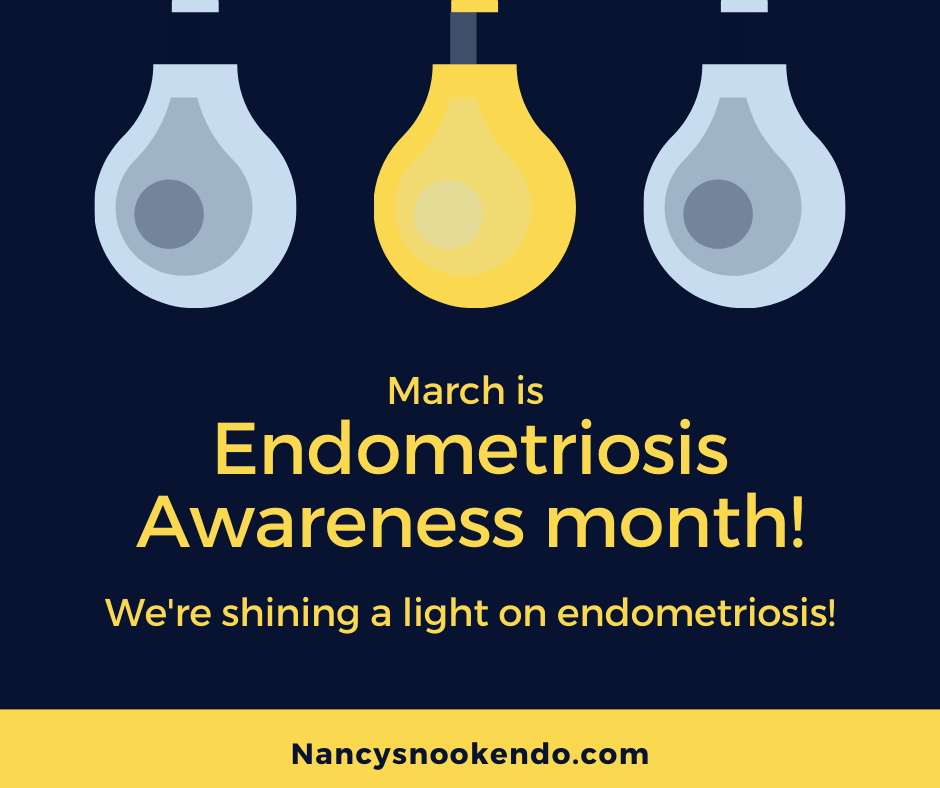
Endometriosis Quick Facts to Share
What is endometriosis?
Endometriosis is an inflammatory disorder where lesions similar to the lining of the uterus are located outside of the uterus. Endometriosis lesions have distinct differences from the lining of the uterus in both their form and function. The lesions release proinflammatory chemicals, can produce estrogen, can grow their own nerves and blood vessels, and can cause adhesions. It is usually located in the pelvis but has been found in other areas throughout the body. An estimated 11% of people assigned female at birth (including teenagers)have endometriosis- although it has been found in men on rare occasion.
What causes it?
No one knows. There is a genetic component, with higher rates seen in those with close relatives having endometriosis. It has been found in fetuses, suggesting it is present before birth.
What are its symptoms?
Endometriosis has many symptoms- from chronic pelvic pain to fatigue to infertility. Symptom severity does not necessarily correlate with the extent of lesions.
- Pain: chronic pelvic pain, pain with menses, pain in between menses, pain with exercise, pain with sex, pain with bowel movements, pain with urination, low back pain
- Fatigue
- Bowel symptoms similar to irritable bowel syndrome such as constipation, diarrhea, and bloating
- Infertility
- And many others
How is diagnosed?
Endometriosis is diagnosed with surgery, preferably with pathology from tissue samples. Some imaging, such as MRI’s and ultrasounds, can rule in endometriosis, but they cannot rule it out. The accuracy of diagnosis depends on the knowledge and skill of the provider.
How is it treated?
While there is no definitive cure for endometriosis, excision surgery where all lesions are removed is recommended. The skill and knowledge of the surgeon is paramount in the ability to recognize and remove all lesions. Hormonal medication might help temporarily with symptom management, but it cannot be used to diagnosis, cure (“clean up”), or prevent the progression of endometriosis. Endometriosis can persist after a hysterectomy or menopause. Endometriosis is often present with other painful conditions such as adenomyosis and interstitial cystitis.
For more information see: nancysnookendo.com
Reaching Out To Teach Another: nancysnookendo.com/support-us/


Chronic Pelvic Pain: More Than Endometriosis Alone
If you have chronic pelvic pain, endometriosis is likely- endometriosis is diagnosed in up to 80% of patients with chronic pelvic pain (Butrick, 2007). Endometriosis is bad enough, but it is frequently accompanied by other conditions that can cause chronic pelvic pain and other symptoms similar to endometriosis. For instance:
- Adenomyosis: Adenomyosis and endometriosis have been found together anywhere from 21.8% to 79% of the time (Antero et al., 2017; Di Donato et al., 2014; Kunz et al., 2005).
- Interstitial cystitis (IC): The so-called “evil twin” of endometriosis occurs in anywhere between 33-65% of people with endometriosis (Butrick, 2007; Chung et al., 2005). One article stated that “if [endometriosis] symptoms recur within the first 12 months after surgical therapy, IC should be considered as a possible cause” or “when therapy for the symptoms of endometriosis is unsuccessful, increasing evidence suggests that IC may be an underlying cause” (Butrick, 2007).
- Endometrial/uterine polyps: Uterine polyps have been found in 48% of people with endometriosis (Zhang et al., 2018; Zheng et al., 2015). And if you have uterine polyps, you are also more likely to have adenomyosis as well (Indraccolo & Barbieri, 2011).
- Fibroids (Leiomyomas): Both endometriosis and fibroids have been found together in 12-26% of patients, although one small study found both in 86% of the patients studied (Huang et al., 2010; Nezhat et al., 2016; Uimara et al., 2011).
These can also lead to other problems such as pelvic floor dysfunction. Other conditions not necessarily associated with endometriosis can also cause chronic pelvic pain. These might include pelvic congestion syndrome, pudendal neuralgia, or occult hernias. This is why it is so important to identify other pain/symptom generators and treat those as well. If it all gets blamed on endometriosis, you may miss a key to finding relief.
References
Antero, M. F., O’Sullivan, D., Mandavilli, S., & Mullins, J. (2017). High prevalence of endometriosis in patients with histologically proven adenomyosis. Fertility and Sterility, 107(3), e46. Retrieved from https://doi.org/10.1016/j.fertnstert.2017.02.088
Butrick, C. W. (2007). Patients with chronic pelvic pain: endometriosis or interstitial cystitis/painful bladder syndrome?. JSLS: Journal of the Society of Laparoendoscopic Surgeons, 11(2), 182. Retrieved from https://europepmc.org/article/med/17761077
Chung, M. K., Chung, R. P., & Gordon, D. (2005). Interstitial cystitis and endometriosis in patients with chronic pelvic pain: the “evil twins” syndrome. JSLS: Journal of the Society of Laparoendoscopic Surgeons, 9(1), 25. Retrieved from https://www.ncbi.nlm.nih.gov/pmc/articles/PMC3015562/
Di Donato, N., Montanari, G., Benfenati, A., Leonardi, D., Bertoldo, V., Monti, G., … & Seracchioli, R. (2014). Prevalence of adenomyosis in women undergoing surgery for endometriosis. European Journal of Obstetrics & Gynecology and Reproductive Biology, 181, 289-293. Retrieved from https://doi.org/10.1016/j.ejogrb.2014.08.016
Huang, J. Q., Lathi, R. B., Lemyre, M., Rodriguez, H. E., Nezhat, C. H., & Nezhat, C. (2010). Coexistence of endometriosis in women with symptomatic leiomyomas. Fertility and sterility, 94(2), 720-723. Retrieved from https://www.fertstert.org/article/S0015-0282(09)00620-7/pdf
Indraccolo, U., & Barbieri, F. (2011). Relationship between adenomyosis and uterine polyps. European Journal of Obstetrics & Gynecology and Reproductive Biology, 157(2), 185-189. Retrieved from https://pubmed.ncbi.nlm.nih.gov/21470766/
Kunz, G., Beil, D., Huppert, P., Noe, M., Kissler, S., & Leyendecker, G. (2005). Adenomyosis in endometriosis—prevalence and impact on fertility. Evidence from magnetic resonance imaging. Human reproduction, 20(8), 2309-2316. Retrieved from https://doi.org/10.1093/humrep/dei021
Nezhat, C., Li, A., Abed, S., Balassiano, E., Soliemannjad, R., Nezhat, A., … & Nezhat, F. (2016). Strong association between endometriosis and symptomatic leiomyomas. JSLS: Journal of the Society of Laparoendoscopic Surgeons, 20(3). doi: 10.4293/JSLS.2016.00053
Uimari, O., Järvelä, I., & Ryynänen, M. (2011). Do symptomatic endometriosis and uterine fibroids appear together?. Journal of human reproductive sciences, 4(1), 34. Retrieved from https://www.ncbi.nlm.nih.gov/pmc/articles/PMC3136067/
Zhang, Y. N., Zhang, Y. S., Yu, Q., Guo, Z. Z., Ma, J. L., & Yan, L. (2018). Higher prevalence of endometrial polyps in infertile patients with endometriosis. Gynecologic and obstetric investigation, 83(6), 558-563. DOI:10.1159/000487946
Zheng, Q. M., Mao, H. L., Zhao, Y. J., Zhao, J., Wei, X., & Liu, P. S. (2015). Risk of endometrial polyps in women with endometriosis: a meta-analysis. Reproductive Biology and Endocrinology, 13(1), 1-9. Retrieved from https://doi.org/10.1186/s12958-015-0092-2
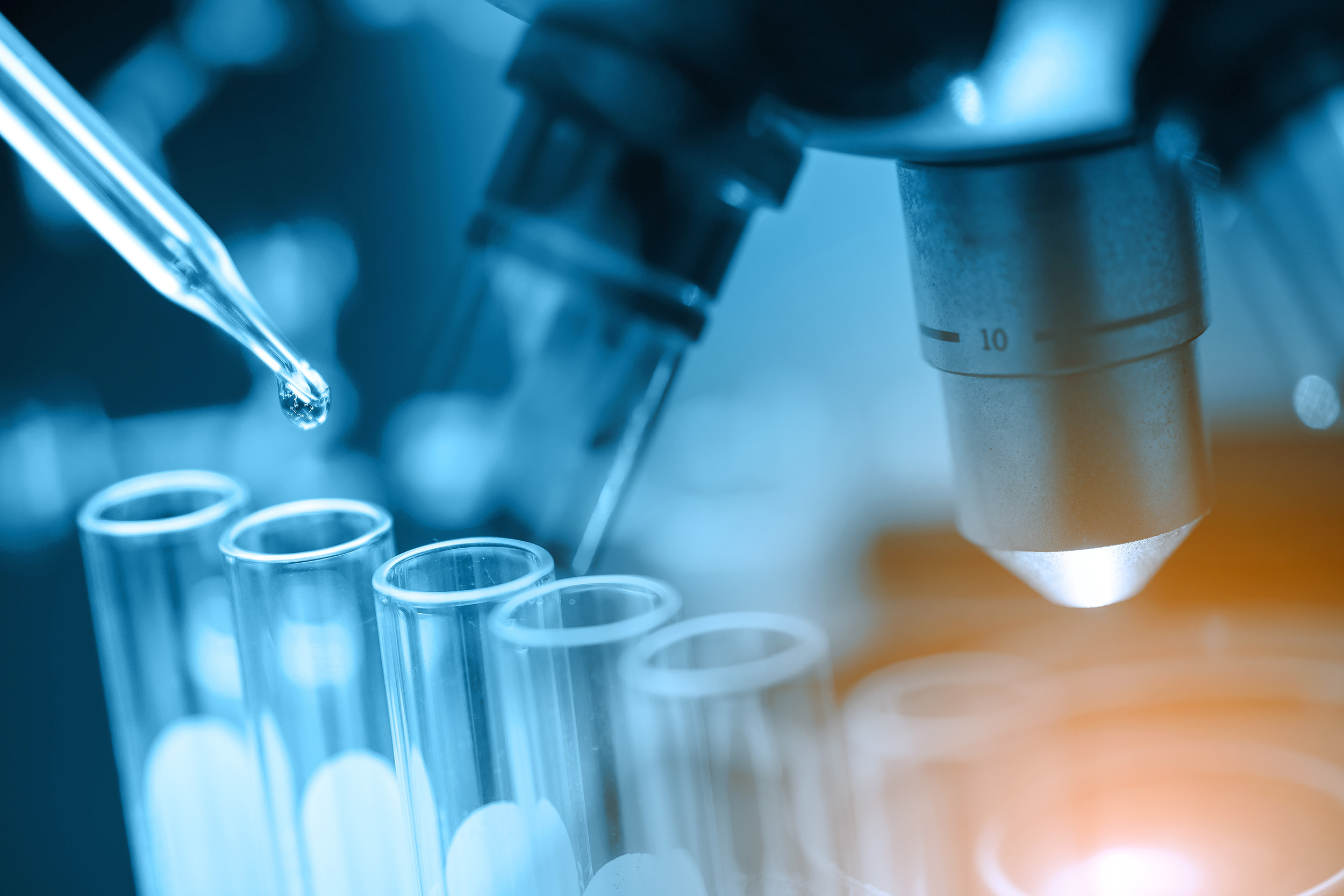
Thyroid disease and endometriosis
There are not many studies looking into the association of endometriosis and thyroid diseases. One study found that Graves disease (hyperthyroidism) was associated with endometriosis, but hypothyroidism was not (Yuk et al., 2016). Another study did not show any increase in prevalence in thyroid disorders among people with endometriosis (it was, in fact, less than the control group) (Petta et al., 2007). However, in another study that was looking into infertility, the researchers found that there was a higher prevalence of positive thyroid antibodies in those with endometriosis (Poppe et al., 2002). There are not enough high-quality studies to give strong evidence to a direct correlation between thyroid disorders and endometriosis. The incidence of endometriosis is estimated to be about 1 in 10 women, while the incidence of thyroid disorder is about 1 in 8 women (American Thyroid Association, n.d.). Thus, there may be significant overlap of the two.
However, endometriosis lesions may respond differently to circulating thyroid hormones. Just as endometriosis lesions have altered estrogen and progesterone receptors (see Role of Estrogen and Progesterone Resistance), endometriosis lesions may have altered thyroid metabolism (Petneau et al., 2019). This altered metabolism can lead to resistance to triiodothyronine (T3) action and local accumulation of thyroxine (T4), which could lead to proliferation of the endometriosis tissue (Peyeau et al., 2019). The study also mentions that “in humans, thyroid disorders are associated with more severe forms of endometriosis” as well as “increased chronic pelvic pain and disease score” (Peyneau et al., 2019). This study further demonstrates that endometriosis tissue has its own unique form and functionality.
References
American Thyroid Association. (n.d.). General Information/Press Room. Retrieved from https://www.thyroid.org/media-main/press-room/
Petta, C. A., Arruda, M. S., Zantut-Wittmann, D. E., & Benetti-Pinto, C. L. (2007). Thyroid autoimmunity and thyroid dysfunction in women with endometriosis. Human reproduction, 22(10), 2693-2697. Retrieved from https://doi.org/10.1093/humrep/dem267
Peyneau, M., Kavian, N., Chouzenoux, S., Nicco, C., Jeljeli, M., Toullec, L., … & Batteux, F. (2019). Role of thyroid dysimmunity and thyroid hormones in endometriosis. Proceedings of the National Academy of Sciences, 116(24), 11894-11899. Retrieved from https://www.pnas.org/content/116/24/11894.short
Poppe, K., Glinoer, D., Van Steirteghem, A., Tournaye, H., Devroey, P., Schiettecatte, J., & Velkeniers, B. (2002). Thyroid dysfunction and autoimmunity in infertile women. Thyroid, 12(11), 997-1001. Retrieved from https://doi.org/10.1089/105072502320908330
Shigesi, N., Kvaskoff, M., Kirtley, S., Feng, Q., Fang, H., Knight, J. C., … & Becker, C. M. (2019). The association between endometriosis and autoimmune diseases: a systematic review and meta-analysis. Human reproduction update, 25(4), 486-503. Retrieved from https://doi.org/10.1093/humupd/dmz014
Yuk, J. S., Park, E. J., Seo, Y. S., Kim, H. J., Kwon, S. Y., & Park, W. I. (2016). Graves disease is associated with endometriosis: a 3-year population-based cross-sectional study. Medicine, 95(10). Retrieved from https://www.ncbi.nlm.nih.gov/pmc/articles/PMC4998884/

Is there an endometriosis Diet?
There is no one specific diet for endometriosis. No food, diet, or supplement will “cure” endometriosis, but it can help manage symptoms and is great for overall health and well-being. Your diet needs to be individualized to your specific needs, and it can take quite a bit of experimentation to find what works for you.
Some studies have found that a few things seem to help manage symptoms of endometriosis. Most of the strategies help to eliminate any food intolerances and influence inflammation and estrogen (Thomas & Natarajan, 2013). Some of the dietary strategies might include:
- Gluten free diet (Marziali et al., 2012)
- Low FODMAP diet (Moore et al., 2017)
- Anti-inflammatory diet (Leonardi et al., 2020)
- Fruits, vegetables (“preferably organic”), and whole grains (Ghonemy & El Sharkawy, 2017; Harris et al., 2018)
- Antioxidants, such as vitamins A, C, D, and E as well as B vitamins (Darling et al., 2013; Ghonemy & El Sharkawy, 2017; Huijs & Nap, 2020; Thomas & Natarajan, 2013) [Caveat- one study stated that vitamins from vitamin rich food and not supplements were noted with the difference (Darling et al., 2013)]
- Anti-inflammatories such as green tea, resveratrol, fish oil, healthy fatty acids (omega-3), N-acetylcysteine, quercitin, curcumin, parthenium, nicotinamide, 5‐methyltetrahydrofolate (Ghonemy & El Sharkawy, 2017; Huijs & Nap, 2020; Leonardi et al., 2020; Signorile, Viceconte, & Baldi, 2018)
- High fiber diet (Thomas & Natarajan, 2013)
- Rule out food intolerances and individualize your diet (Karlsson, Patel, & Premberg, 2020; Kronemyer, 2019; Leonardi et al., 2020)
- “Balanced diet with adequate vitamins and minerals, reduction of alcohol, sugar, and caffeine intake, exclusion of fructose or lactose intolerance” (Halis, Mechsner, & Ebert, 2010)
- The consumption of soy is controversial in endometriosis; however, Huijs & Nap (2020) note that “the amount of phytoestrogens present in soy is relatively low, making the effect of avoiding soy on suppressing endometriosis-related symptoms questionable”. They conclude that “there is insufficient evidence to advise women with endometriosis to avoid soy” (Huijs & Nap, 2020).
Karlsson, Patel, and Premberg (2020) summed it up best by stating that “participants experienced decreased symptoms and increased well-being after adopting an individually-adapted diet”; therefore, it may take some experimenting to find what works best for you as an individual.
*Interstitial cystitis is often called the “evil twin” of endometriosis and its symptoms can be greatly influenced by diet (see Interstitial Cystitis).
more topics:
Curcumin’s effect on endometriosis
Endometriosis Diet and Nutrition
Social gatherings and food choices
Links:
- “Endo Diet” from the Nutritionista
- Podcast on “Outsmart Endometriosis: The Elimination ‘Undiet’ for Endometriosis with Dr Jessica Drummond”
References
Darling, A. M., Chavarro, J. E., Malspeis, S., Harris, H. R., & Missmer, S. A. (2013). A prospective cohort study of Vitamins B, C, E, and multivitamin intake and endometriosis. Journal of Endometriosis and Pelvic Pain Disorders, 5(1), 17-26. Retrieved from https://journals.sagepub.com/doi/abs/10.5301/je.5000151
Ghonemy, G. E., & El Sharkawy, N. B. (2017). Impact of changing lifestyle on endometriosis related pain. IOSR Journal of Nursing and Health Science, 6(2), 120-129. DOI: 10.9790/1959-060205120129
Halis, G., Mechsner, S., & Ebert, A. D. (2010). The diagnosis and treatment of deep infiltrating endometriosis. Deutsches Ärzteblatt International, 107(25), 446. Retrieved from https://www.ncbi.nlm.nih.gov/pmc/articles/PMC2905889/
Harris, H. R., Eke, A. C., Chavarro, J. E., & Missmer, S. A. (2018). Fruit and vegetable consumption and risk of endometriosis. Human Reproduction, 33(4), 715-727. Retrieved from https://doi.org/10.1093/humrep/dey014
Huijs, E., & Nap, A. W. (2020). The effects of nutrients on symptoms in women with endometriosis: a systematic review. Reproductive BioMedicine Online. Retrieved from https://www.sciencedirect.com/science/article/abs/pii/S147264832030225X
Leonardi, M., Horne, A. W., Vincent, K., Sinclair, J., Sherman, K. A., Ciccia, D., … & Armour, M. (2020). Self-management strategies to consider to combat endometriosis symptoms during the COVID-19 pandemic. Human Reproduction Open, 2020(2), hoaa028. Retrieved from https://academic.oup.com/hropen/article/2020/2/hoaa028/5849477?login=true
Karlsson, J. V., Patel, H., & Premberg, A. (2020). Experiences of health after dietary changes in endometriosis: a qualitative interview study. BMJ open, 10(2), e032321. https://bmjopen.bmj.com/content/10/2/e032321.abstract
Kronemyer, B. (2019). Nutrient intake and gastrointestinal comorbidities with endometriosis. Contemporary OB/GYN, 64(10), 26-26. Retrieved from https://search.proquest.com/openview/1b532d099eb09103200be8ee1bae4f3c/1?pq-origsite=gscholar&cbl=48920
Marziali, M., Venza, M., Lazzaro, S., Lazzaro, A., Micossi, C., & Stolfi, V. M. (2012). Gluten-free diet: a new strategy for management of painful endometriosis related symptoms?. Minerva chirurgica, 67(6), 499-504. Retrieved from https://europepmc.org/article/med/23334113
Moore, J. S., Gibson, P. R., Perry, R. E., & Burgell, R. E. (2017). Endometriosis in patients with irritable bowel syndrome: specific symptomatic and demographic profile, and response to the low FODMAP diet. Australian and New Zealand Journal of Obstetrics and Gynaecology, 57(2), 201-205. Retrieved from https://obgyn.onlinelibrary.wiley.com/doi/abs/10.1111/ajo.12594
Signorile, P. G., Viceconte, R., & Baldi, A. (2018). Novel dietary supplement association reduces symptoms in endometriosis patients. Journal of cellular physiology, 233(8), 5920-5925. Retrieved from https://onlinelibrary.wiley.com/doi/abs/10.1002/jcp.26401
Thomas, D. S., & Natarajan, J. R. (2013). Diet–A New Approach To Treating Endometriosis–What Is The Evidence?. IOSR Journal of Nursing and Health Science, 1(5), 4-11. Retrieved from https://www.researchgate.net/publication/282006175_Diet-A_new_approach_to_treating_endometriosis-_What_is_the_evidence
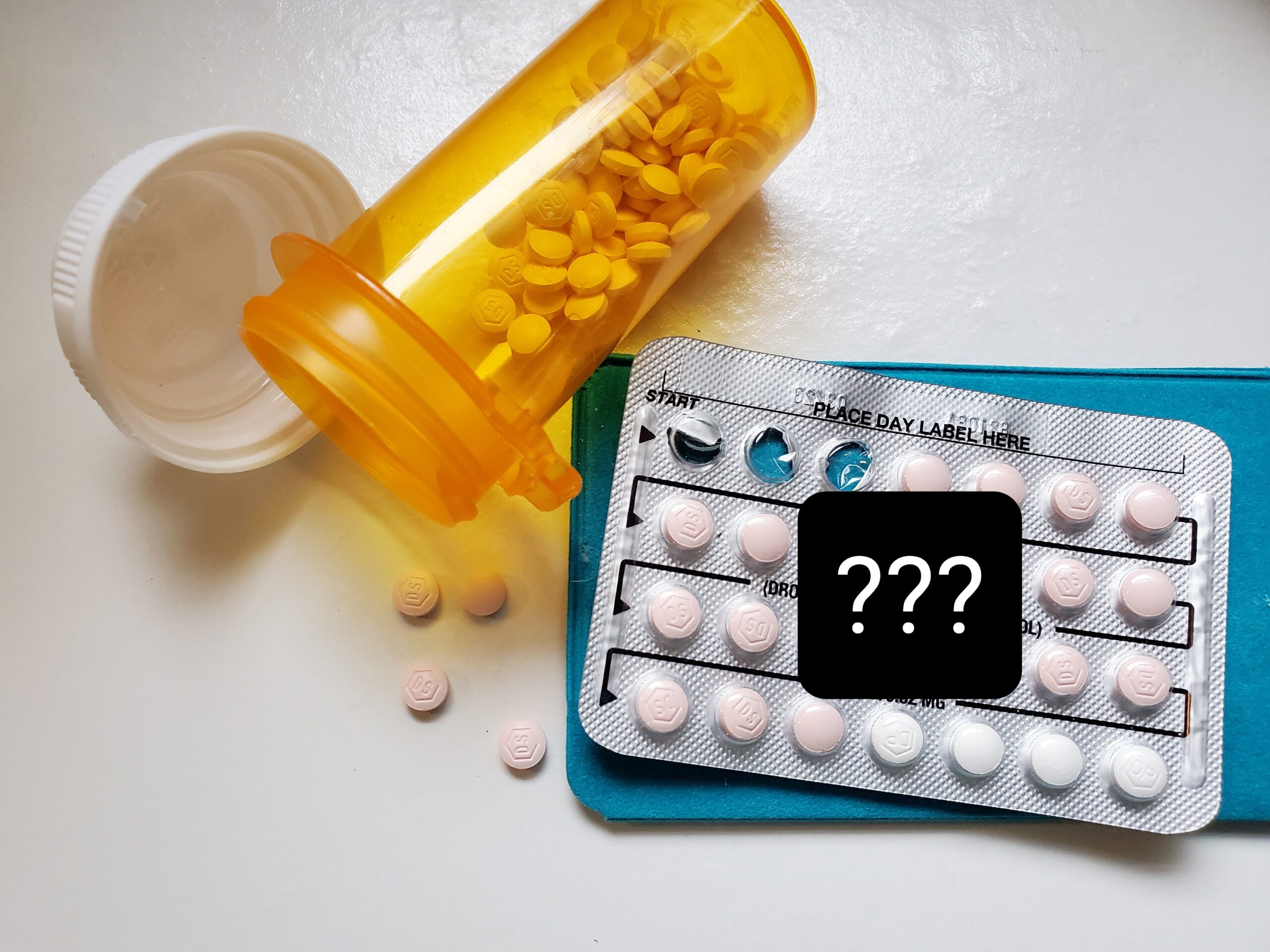
Medication to Prevent Recurrence?
“Should I take medication to prevent recurrence of my endo?” There is no definitive answer to this question- it is an individual choice that should be discussed with your provider. However, evidence points to it not being needed if ALL endometriosis is removed with surgery. A few things to consider:
Is it truly a “recurrence” or just missed disease?
A significant factor to consider is if all endometriotic lesions were removed in the first place:
- “…findings all support that residual lesions seems to be the primary reason for the recurrence of the disease” (Selçuk & Bozdağ, 2013).
- “Lack of complete surgical excision was another independent risk factor for recurrence of disease” (Ianieri, Mautone, & Ceccaroni, 2018).
- Deep infiltrating disease has a much lower recurrence rate with complete excision versus incomplete (3.9% versus 35.3%!) (Cao et al., 2015).
- “The experience of the surgeon is also a factor that implies the risk of recurrence” (Selçuk & Bozdağ, 2013).
- Interestingly, prior medical treatment before excision can increase the risk for recurrence (Koga et al., 2013).
Does it involve a type of endometriosis that has higher recurrence risk, such as ovarian, peritoneal, or deep infiltrating disease (stage 3 or 4)? Are you at a young age (under 21 years)?
- There is a higher recurrence risk with ovarian, peritoneal, or deep infiltrating disease (stage 3 or 4) (Selçuk & Bozdağ, 2013). Ovarian endometriomas have a recurrence rate of 11-32% (higher risk in younger patients and those with advanced disease) (Koga et al., 2013).
- Those at a younger age (under 21 years) have a higher recurrence rate (Tandoi et al., 2011).
- However, these factors depend again on the ability to remove the disease. The skill of the surgeon and having an interdisciplinary team can increase the odds of removing more advanced disease and decrease the risk of recurrence- this holds true even for younger patients (Fischer et al., 2013; Yeung et al., 2011). (See Why Excision)
Are there other conditions that can be causing continued symptoms that are similar to endometriosis symptoms (adenomyosis, interstitial cystitis, etc.)?
- Most of us with endometriosis have more than one condition that can mimic the symptoms of endometriosis. These conditions need their own specific treatment. (See Related Conditions)
Remember, medications overall are “suppressive rather than curative” (Falcone & Flyckt, 2018). In addition, hormonal medication may not stop the progression of disease- this is particularly important where the ureters and/or bowel are involved (Barra et al., 2018; Ferrero et al., 2011; Millochau et al., 2016).
There are many studies and arguments for both sides. Here are a few:
Against it:
- “There is currently no evidence to support any treatment being recommended to prevent the recurrence of endometriosis following conservative surgery.” (Sanghera et al., 2016)
- “Many studies have investigated factors determining the recurrence of endometrioma and pain after surgery [16, 19, 20]…. Regardless of the mechanism, the present and previous studies suggest that postoperative medical treatment is known to delay but not completely prevent recurrence…. In our study, we also failed to observe a benefit for postoperative medication in preventing endometrioma and/or endometriosis-related pain recurrence.” (Li et al., 2019)
- “Complete laparoscopic excision of endometriosis in teenagers–including areas of typical and atypical endometriosis–has the potential to eradicate disease. These results do not depend on postoperative hormonal suppression.” (Yeung et al., 2011)
- “A systematic review found that post-surgical hormonal treatment of endometriosis compared with surgery alone has no benefit for the outcomes of pain or pregnancy rates…it found that there is insufficient evidence to conclude that hormonal suppression in association with surgery for endometriosis is associated with a significant benefit with regard to any of the outcomes identified….Moreover, even if post-operation medication proves to be effective in reducing recurrence risk, it is questionable that ‘all’ patients would require such medication in order to reduce the risk of recurrence. It has been reported that about 9% of women with endometriosis simply do not respond to progestin treatment….Therefore, the use of post-operation medication indiscriminately may cause unnecessary side effects (and an increase in health care costs) in some patients who may intrinsically have a much lower risk than others and in others who may be simply resistant to the therapy. The identification of high-risk patients who may benefit the most from drug intervention would remain a challenge.” (Guo, 2009)
- “GnRHa administration is followed by a temporary improvement of pain in patients with incomplete surgical treatment. It seems that it has no role on post-surgical pain when the surgeon is able to completely excise DIE implants.” (Angioni et al., 2015)
For it:
- “Post-operative hormonal suppression following conservative endometriosis surgery decreases the odds of disease recurrence and results in greater reductions in pelvic pain/dysmenorrhea compared to expectant management.” (Zakhari et al., 2019)
- “Laparoscopic excision is considered as the ‘gold standard’ treatment of ovarian endometrioma. However, a frustrating aspect is that disease can recur….Regarding post-operative medical management for preventing recurrence, GnRH analogue and danazol have not been proved to be effective mainly because most trials used these drugs over short periods. In contrast, long term administration of OC is safe and tolerable and recommended for those who do not want to conceive immediately after the surgery.” (Koga et al., 2013)
References
Angioni, S., Pontis, A., Dessole, M., Surico, D., Nardone, C. D. C., & Melis, I. (2015). Pain control and quality of life after laparoscopic en-block resection of deep infiltrating endometriosis (DIE) vs. incomplete surgical treatment with or without GnRHa administration after surgery. Archives of gynecology and obstetrics, 291(2), 363-370. Retrieved from https://link.springer.com/article/10.1007/s00404-014-3411-5
Barra, F., Scala, C., Biscaldi, E., Vellone, V. G., Ceccaroni, M., Terrone, C., & Ferrero, S. (2018). Ureteral endometriosis: a systematic review of epidemiology, pathogenesis, diagnosis, treatment, risk of malignant transformation and fertility. Human reproduction update, 24(6), 710-730. https://academic.oup.com/humupd/article/24/6/710/5085039?login=true
Cao, Q., Lu, F., Feng, W. W., Ding, J. X., & Hua, K. Q. (2015). Comparison of complete and incomplete excision of deep infiltrating endometriosis. International journal of clinical and experimental medicine, 8(11), 21497. Retrieved from https://www.ncbi.nlm.nih.gov/pmc/articles/PMC4723943/
Falcone, T., & Flyckt, R. (2018). Clinical management of endometriosis. Obstetrics & Gynecology, 131(3), 557-571. Retrieved from https://journals.lww.com/greenjournal/Abstract/2018/03000/Clinical_Management_of_Endometriosis.23.aspx?context=FeaturedArticles&collectionId=4
Ferrero, S., Camerini, G., Venturini, P. L., Biscaldi, E., & Remorgida, V. (2011). Progression of bowel endometriosis during treatment with the oral contraceptive pill. Gynecological Surgery, 8(3), 311-313. Retrieved from https://link.springer.com/article/10.1007/s10397-010-0610-3
Fischer, J., Giudice, L. C., Milad, M., Mosbrucker, C., & Sinervo, K. R. (2013). Diagnosis & management of endometriosis: pathophysiology to practice. APGO Educational Series on Women’s Health Issues. Retrieved from https://www.ed.ac.uk/files/atoms/files/diagnosis_and_management_of_endometriosis_booklet.pdf
Guo, S. W. (2009). Recurrence of endometriosis and its control. Human reproduction update, 15(4), 441-461. Retrieved from http://humupd.oxfordjournals.org/content/15/4/441.full
Ianieri, M. M., Mautone, D., & Ceccaroni, M. (2018). Recurrence in deep infiltrating endometriosis: a systematic review of the literature. Journal of minimally invasive gynecology, 25(5), 786-793. Retrieved from https://www.sciencedirect.com/science/article/pii/S1553465018300372
Koga, K., Osuga, Y., Takemura, Y., Takamura, M., & Taketani, Y. (2013). Recurrence of endometrioma after laparoscopic excision and its prevention by medical management. Front Biosci (Elite Ed), 5, 676-683. Retrieved from https://pdfs.semanticscholar.org/2da7/5702eac08b0a32fb31bd5478be9e5d43a8b7.pdf
Li, X. Y., Chao, X. P., Leng, J. H., Zhang, W., Zhang, J. J., Dai, Y., … & Wu, Y. S. (2019). Risk factors for postoperative recurrence of ovarian endometriosis: long-term follow-up of 358 women. Journal of Ovarian Research, 12(1), 79. Retrieved from https://ovarianresearch.biomedcentral.com/articles/10.1186/s13048-019-0552-y
Millochau, J. C., Abo, C., Darwish, B., Huet, E., Dietrich, G., & Roman, H. (2016). Continuous amenorrhea may be insufficient to stop the progression of colorectal endometriosis. Journal of minimally invasive gynecology, 23(5), 839-842. Retrieved from https://www.jmig.org/article/S1553-4650(16)30047-4/abstract?fbclid=IwAR2Q7o1kJtfNNgMd0Q4_5K0BDe9_DjH1QOUTxTLK2HpgiFVgws5NT9xVdwo
Sanghera, S., Barton, P., Bhattacharya, S., Horne, A. W., & Roberts, T. E. (2016). Pharmaceutical treatments to prevent recurrence of endometriosis following surgery: a model-based economic evaluation. BMJ open, 6(4), e010580. Retrieved from http://bmjopen.bmj.com/content/6/4/e010580.long
Selçuk, İ., & Bozdağ, G. (2013). Recurrence of endometriosis; risk factors, mechanisms and biomarkers; review of the literature. Journal of the Turkish German Gynecological Association, 14(2), 98. Retrieved from https://journals.sagepub.com/doi/full/10.2217/whe.15.56
Tandoi, I., Somigliana, E., Riparini, J., Ronzoni, S., & Candiani, M. (2011). High rate of endometriosis recurrence in young women. Journal of pediatric and adolescent gynecology, 24(6), 376-379. Retrieved from https://doi.org/10.1016/j.jpag.2011.06.012
Yeung Jr, P., Sinervo, K., Winer, W., & Albee Jr, R. B. (2011). Complete laparoscopic excision of endometriosis in teenagers: is postoperative hormonal suppression necessary?. Fertility and sterility, 95(6), 1909-1912. Retrieved from http://www.ncbi.nlm.nih.gov/pubmed/21420081
Zakhari, A., Delpero, E., McKeown, S., Murji, A., & Bougie, O. (2019). Long Term Outcomes of Post-Operative Hormonal Suppression in Patients with Endometriosis: A Systematic Review and Meta-Analysis. Journal of Minimally Invasive Gynecology, 26(7), S90. Retrieved from https://www.sciencedirect.com/science/article/pii/S1553465019311641

My experience with pelvic physical therapy
I had never heard of pelvic physical therapy when my doctor suggested it. I was both wary of what pelvic physical therapy would entail and how much it might help. Pain from endometriosis, especially pain that has gone on for years, can contribute to myofascial issues (Aredo et al., 2017; dos Bispo et al., 2016). Most people with endometriosis have other conditions that can contribute to chronic pelvic pain as well. Pelvic physical therapy can be a great part of a treatment plan for chronic pelvic pain (Weiss, Rich, & Swisher, 2012). It did help me tremendously- especially after I had my endometriosis lesions excised.
There is specialized training to do pelvic physical therapy. For instance, my pelvic PT held a certification in pelvic health physical therapy (CAPP) and knew that kegels weren’t a blanket treatment for pelvic conditions in women (see “Everyone should do kegels” and other pelvic floor myths).
When I went for my initial consultation with the pelvic physical therapist, she went through my history and did both an external and internal exam. She assessed what might be contributing to my problems. She used external electromyographic biofeedback where I could see the screen and see how tight my pelvic floor muscles were (off the chart so tight).
My PT then created a plan to address my specific issues to help restore balance to my body and retrain my pelvic floor muscles to release. She utilized biofeedback, neuromuscular electrical stimulation, yoga therapy, myofascial release techniques, manual joint mobilization and therapeutic exercises. She also adapted my plan based on my feedback. Having a knowledgeable pelvic physical therapist is so important- because everyone is different and will need a unique treatment plan.
I did 3 months of physical therapy before surgery and then 3 more months after. I noted some improvement before surgery, but it wasn’t until after my surgery to remove my endometriosis that I really noticed a big difference. It did take that amount of time to heal after surgery and continue the physical therapy work in order to get to a point that I felt I was where I wanted to be. It wasn’t easy, but it was worth it.
If you are considering pelvic physical therapy, then check out our Treatment page and look under Physical Therapy.
Here are some good places to start to learn more about pelvic physical therapy and how it might help you:
- Preparing for Pelvic Floor Therapy
- Pelvic Floor Spasm: The missing link in chronic pelvic pain
- Recognition and Management of Nonrelaxing Pelvic Floor Dysfunction
- 10 Expert Physio Techniques that Relieve Pelvic Floor Muscle Tension and Pelvic Pain Fast
- Video: Endometriosis, Your Pelvic Floor, and You
- Video: Painful Sex and the Endo Pelvis
References
- Aredo, J. V., Heyrana, K. J., Karp, B. I., Shah, J. P., & Stratton, P. (2017, January). Relating chronic pelvic pain and endometriosis to signs of sensitization and myofascial pain and dysfunction. In Seminars in reproductive medicine (Vol. 35, No. 1, p. 88). NIH Public Access. Retrieved from https://www.ncbi.nlm.nih.gov/pmc/articles/PMC5585080/
- dos Bispo, A. P. S., Ploger, C., Loureiro, A. F., Sato, H., Kolpeman, A., Girão, M. J. B. C., & Schor, E. (2016). Assessment of pelvic floor muscles in women with deep endometriosis. Archives of gynecology and obstetrics, 294(3), 519-523. Retrieved from https://link.springer.com/article/10.1007/s00404-016-4025-x
- Weiss, P. M., Rich, J., & Swisher, E. (2012). Pelvic floor spasm: the missing link in chronic pelvic pain. Contemporary OB/GYN. Retrieved from dos Bispo, A. P. S., Ploger, C., Loureiro, A. F., Sato, H., Kolpeman, A., Girão, M. J. B. C., & Schor, E. (2016). Assessment of pelvic floor muscles in women with deep endometriosis. Archives of gynecology and obstetrics, 294(3), 519-523. Retrieved from https://link.springer.com/article/10.1007/s00404-016-4025-x

Fatigue with Endometriosis
Fatigue is a symptom of endometriosis and can be quite debilitating (Ramin-Wright et al., 2018). Taber’s Medical Dictionary (n.d.) defines fatigue as “an overwhelming sustained feeling of exhaustion and diminished capacity for physical and mental work.” Fatigue with an illness often does not improve with rest (Louati & Berenbaum, 2015).
Endometriosis is an inflammatory disorder, and this inflammation can lead to fatigue. Inflammatory molecules, such as prostaglandins, cytokines, etc., contribute to fatigue as well as problems with “sleep, cognition, anxiety, and depression” (Poon et al., 2015; Zielinski, Systrom, & Rose, 2019). Chronic low-grade inflammation can cause a reduction in energy on the cellular level (Lacourt et al., 2018). In a circular pattern, inflammation can lead to pain, sleep problems, stress, and depression….which can lead to more inflammation. In addition, hormones, “mainly estradiol,” can “promote the expression and release of pro-inflammatory factors” (García-Gómez et al., 2020). Endometriosis lesions have shown higher amounts of estrogen receptors as well as progesterone resistance- making them susceptible to inflammatory promotion from estrogen (see Role of Estrogen Receptor in Endometriosis).
Pain can lead to sleep problems, and sleep disorders can also cause more inflammation, leading to more pain and fatigue (Lacourt et al., 2018; Zielinski, Systrom, & Rose, 2019). On a good note: “melatonin therapy has been shown to attenuate inflammatory cytokines…thus could potentially be beneficial in combating fatigue” (Zielinski, Systrom, & Rose, 2019). Stress, even good stress, can take a toll on your body and mind. Chronic stress can lead to more inflammation which can contribute to feelings of fatigue (Zielinski, Systrom, & Rose, 2019). Inflammation can affect neurotransmitters which can affect both fatigue and mood (Zielinski, Systrom, & Rose, 2019). Lee & Giuliani (2019) report that “depression and fatigue are associated with an increased activation of the immune system which may serve as a valid target for treatment.” They also note that “antidepressants have been shown to decrease inflammation” (Lee & Giuliani, 2019).
So we see that many things can contribute to fatigue. Fatigue is difficult to treat, especially if the underlying cause is not addressed. Ramin-Wright et al. (2018) states that “as fatigue is experienced by numerous women with endometriosis, it needs to be addressed in the discussion of management and treatment of the disease. In addition to treating endometriosis, it would be beneficial to reduce insomnia, depression, pain and occupational stress in order to better manage fatigue.” It is also important to remember that fatigue is a symptom of many disorders, so do not automatically assume that endometriosis is the only cause of your fatigue- it’s important to rule out other causes too.
Resources:
- “Endometriosis Fatigue Management”
- “This Is What Chronic Fatigue Feels Like”
- “Fatigue is a constant state of being tired—not sleepy, but physically exhausted.”
References
Lee, C. H., & Giuliani, F. (2019). The role of inflammation in depression and fatigue. Frontiers in immunology, 10, 1696. Retrieved from https://doi.org/10.3389/fimmu.2019.01696
García-Gómez, E., Vázquez-Martínez, E. R., Reyes-Mayoral, C., Cruz-Orozco, O. P., Camacho-Arroyo, I., & Cerbón, M. (2020). Regulation of inflammation pathways and inflammasome by sex steroid hormones in endometriosis. Frontiers in endocrinology, 10, 935. Retrieved from https://doi.org/10.3389/fendo.2019.00935
Lacourt, T. E., Vichaya, E. G., Chiu, G. S., Dantzer, R., & Heijnen, C. J. (2018). The high costs of low-grade inflammation: persistent fatigue as a consequence of reduced cellular-energy availability and non-adaptive energy expenditure. Frontiers in behavioral neuroscience, 12, 78. Retrieved from https://www.ncbi.nlm.nih.gov/pmc/articles/PMC5932180/#:~:text=We%20propose%20that%20chronic%20low,rapid%20generation%20of%20cellular%20energy.
Louati, K., & Berenbaum, F. (2015). Fatigue in chronic inflammation-a link to pain pathways. Arthritis research & therapy, 17(1), 1-10. Retrieved from https://www.ncbi.nlm.nih.gov/pmc/articles/PMC4593220/
Poon, D. C. H., Ho, Y. S., Chiu, K., Wong, H. L., & Chang, R. C. C. (2015). Sickness: From the focus on cytokines, prostaglandins, and complement factors to the perspectives of neurons. Neuroscience & biobehavioral reviews, 57, 30-45. Retrieved from https://www.sciencedirect.com/science/article/abs/pii/S0149763415002006
Ramin-Wright, A., Schwartz, A. S. K., Geraedts, K., Rauchfuss, M., Wölfler, M. M., Haeberlin, F., … & Leeners, B. (2018). Fatigue–a symptom in endometriosis. Human reproduction, 33(8), 1459-1465. Retrieved from https://academic.oup.com/humrep/article/33/8/1459/5040620?login=true
Taber’s Medical Dictionary. (n.d.). Fatigue. Retrieved from https://www.tabers.com/tabersonline/view/Tabers-Dictionary/757231/all/fatigue
Zielinski, M. R., Systrom, D. M., & Rose, N. R. (2019). Fatigue, sleep, and autoimmune and related disorders. Frontiers in immunology, 10, 1827. Retrieved from https://doi.org/10.3389/fimmu.2019.01827
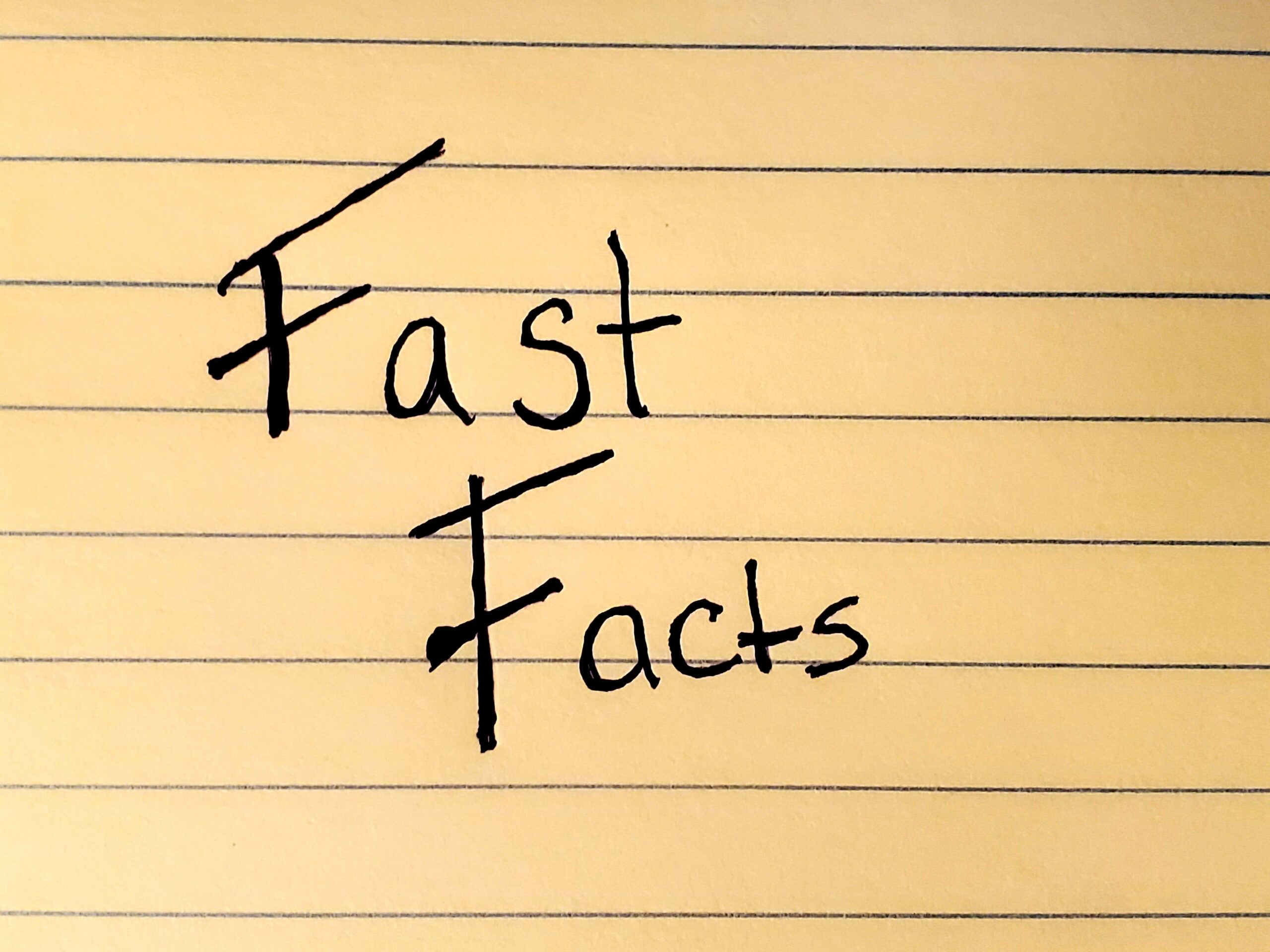
Ehlers Danlos and endometriosis
- Ehlers Danlos syndrome (EDS) is a connective tissue disorder that can affect skin, joints, and many tissues in the body by its effect on collagen (National Organization for Rare Diseases, 2017).
- There are not many available studies on any association between endometriosis and Ehlers Danlos. Heavy menstrual bleeding, irregular menstruation, and severe pain during menstruation are symptoms of Ehlers Danlos (Castori, 2012). One study noted that, while those with Ehlers Danlos experience many common symptoms of endometriosis such as painful periods and painful penetration, “endometriosis was not highly prevalent in this population” (Hugon-Rodin et al., 2016). Another study also notes that “only occasionally” are those symptoms “related to an underlying gynecologic disorder, such as endometriosis” (Castori, 2012). In a presentation to the Ehlers Danlos Society in 2018, Dr. Blagowidow cites 6-23% of those with EDS also have endometriosis.
- The incidence of Ehlers-Danlos syndrome is between 1 in 2500 and 1 in 5000 (Miklovic & Sieg, 2019). The incidence of endometriosis is 1 in 10 (Parasar, Ozcan, & Terry, 2017). There may be overlap in the conditions, but nothing definitive has been discovered associating it and endometriosis, aside from common symptoms.
- There are not many resources for treating the pelvic pain associated with Ehlers Danlos syndrome. NSAIDS, vitamin B1, magnesium, acupuncture, oral contraceptive pills, progesterone (pills or intrauterine device), and physical therapy are recommendations from Dr. Natalie Blagowidow (2018) to the Ehlers Danlos Society. You can read more about treatment options for endometriosis here.
References
Blagowidow, N. (2018). OB/GYN and EDS/HDS. Retrieved from https://www.ehlers-danlos.com/pdf/2018-annual-conference/N-Blagowidow-2018Baltimore-OB-GYN-and-EDS-HSD-S.pdf
Castori, M. (2012). Ehlers-danlos syndrome, hypermobility type: an underdiagnosed hereditary connective tissue disorder with mucocutaneous, articular, and systemic manifestations. International Scholarly Research Notices, 2012. Retrieved from https://www.hindawi.com/journals/isrn/2012/751768/
Hugon-Rodin, J., Lebègue, G., Becourt, S., Hamonet, C., & Gompel, A. (2016). Gynecologic symptoms and the influence on reproductive life in 386 women with hypermobility type Ehlers-Danlos syndrome: a cohort study. Orphanet Journal of Rare Diseases, 11(1), 1-6. Retrieved from https://ojrd.biomedcentral.com/articles/10.1186/s13023-016-0511-2
Miklovic, T., & Sieg, V. C. (2019). Ehlers Danlos Syndrome. Retrieved from https://www.ncbi.nlm.nih.gov/books/NBK549814/
National Organization for Rare Diseases. (2017). Ehlers Danlos Syndromes. Retrieved from https://rarediseases.org/rare-diseases/ehlers-danlos-syndrome/#symptoms
Parasar, P., Ozcan, P., & Terry, K. L. (2017). Endometriosis: epidemiology, diagnosis and clinical management. Current obstetrics and gynecology reports, 6(1), 34-41. Retrieved from https://www.ncbi.nlm.nih.gov/pmc/articles/PMC5737931/#:~:text=Endometriosis%20affects%2010%E2%80%9315%25%20of,and%20reduced%20quality%20of%20life.
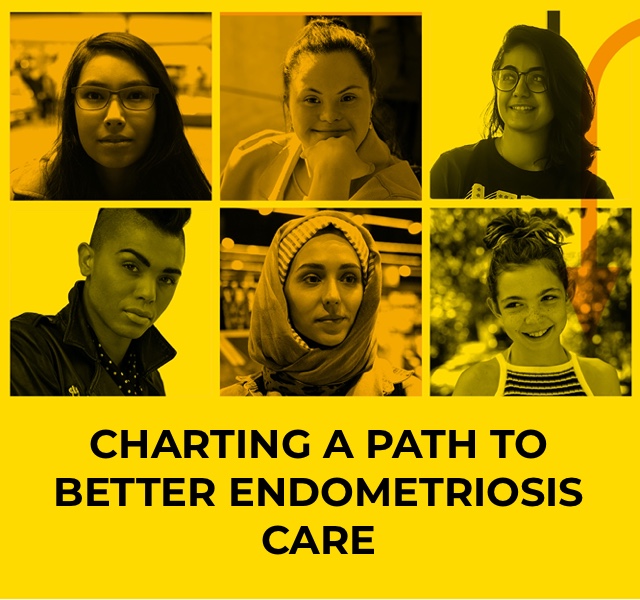
Table of Contents
Here is an updated Table of Contents:
WHAT IS ENDOMETRIOSIS
- Endometriosis Overview
- Staging, “Minimal” Disease, and DIE
- ORIGIN THEORIES OF ENDOMETRIOSIS
- APPEARANCES OF ENDOMETRIOSIS
- LOCATIONS OF ENDOMETRIOSIS
- BEHAVIOR OF ENDOMETRIOSIS
- MORE IN DEPTH ON ENDO
SYMPTOMS
- Symptoms
- Symptoms Based on Endometriosis Locations
- PAIN
- Introduction: Pain
- What influences pain levels?
- Pain Associated with Minimal Endometriosis
- Location of lesions and where pain is felt
- Pelvic Floor Dysfunction links
- Pain with Penetration
- Brokengirl: The secret shame of chronic pelvic pain and the unseen consequences of our current care paradigm for endometriosis care
- Sciatic Pain and Endometriosis
- Nerves and endometriosis
- SEXUAL FUNCTIONING
- BOWEL GASTROINTESTINAL
- FATIGUE AND INFLAMMATION
- INFERTILITY
- THORACIC (DIAPHRAGM)
- OVARIES
- URINARY (BLADDER, URETERS, AND KIDNEYS)
- OTHER
DIAGNOSIS
- Surgery
- Ultrasound Use with Endometriosis
- Magnetic Resonance Imaging (MRI’s) and endometriosis
- Labwork and Blood Tests
- But your tests are all negative?
- Clinical diagnosis of endometriosis: a call to action- from AJOG
TREATMENT
- How is endometriosis treated?
- The Standard of Care is Not Sufficient!
- The Triad of Successful Endometriosis Treatment
- SURGERY
- Why Surgery
- Why excision is recommended
- Endometriosis Appearance and Location: Impact on Surgical Success
- The Cost Effectiveness of Surgical Excision of Endometriosis: an unpublished study
- Should laser vaporization and electrocoagulation of endometriosis be banned
- Robotic Surgery
- Adhesion prevention
- Pelvic Adhesions
- What to Expect in the Weeks After Skilled Excision Surgery
- Managing expectations pre-op and post op
- Bowel Endometriosis Surgical Treatment
- MEDICATIONS
- PHYSICAL THERAPY
- OTHER THERAPIES
RELATED CONDITIONS
- Adenomyosis
- Endometrial/Uterine Polyps
- Interstitial Cystitis/Bladder Pain Syndrome
- Pelvic Floor Dysfunction
- Fibroids (Leiomyomas)
- Polycystic Ovarian Syndrome (PCOS)
- Pudendal Neuralgia and Vulvodynia
- Pelvic Congestion Syndrome
- Occult Hernia
- Migraines and Endometriosis
RESOURCES
- Choosing your surgeon
- Managing the relationship with your current doctor
- Personal Medical History Template
- Things to pack for the Hospital
- Why Patients Have a Role to Play in Changing the Status Quo of Endometriosis
- Endometriosis: The Patient Perspective (an AAGL presentation)
- Giving Women Control of their Healthcare: from the APPG
- UK Resources
- Australia Resources
- PREPARING FOR SURGERY- PRE AND POST OPERATIVE
- LINKS, VIDEOS, AND PODCASTS
- INSURANCE AND FINANCES
- INFERTILITY
- TEENS
- PREGNANCY
- LGBTQIA
FREQUENTLY ASKED QUESTIONS
- Is there a link between heart disease and endometriosis?
- What effects can long term low estrogen cause?
- Can endometriosis persist after hysterectomy/ovary removal
- Is There Microscopic or Occult Endometriosis
- Is endometriosis an autoimmune disease?
- Does endometriosis increase my risk of cancer?
- Myths and Misinformation
PATIENT STORIES
- Barriers to Care
- Endometriosis: A Husband’s Perspective
- Endometriosis is so much worse than a bad period
- Study on the “Impact of endometriosis on women’s lives”
- Parenting is Hard, Even Harder with Endometriosis
- Coping with Endometriosis

Endometriosis Getting on Your Nerves?
It really is! “Endometriosis lesions are known to be hyperinnervated” (Liu, Yan, & Guo, 2019). People with endometriosis have abnormal nerve growth and nerve fibers close to endometriosis lesions (Zheng, Zhang, Leng, & Lang, 2019). Pain with endometriosis is multifactorial, including irritation of nerves in the pelvis, new nerve growth, heightened sensitivity to pain, inflammation in the pelvis, and pain producing agents in the pelvic fluid (Ferrero, Vellone, & Barra, 2019). The interplay between nerves and inflammation is believed to play a significant role in pain. There are increased levels of multiple inflammatory factors in and around endometriosis lesions (Wei et al., 2020). Endometriosis “can also directly irritate and infiltrate pelvic nerves promoting endometriosis-associated pain” (Ferrero, Vellone, & Barra, 2019) and can lead “to corresponding neurological symptoms or deficits” (Working group of ESGE et al., 2020). Of all the nerve!!
Read more below:
Studies:
- Liu, X., Yan, D., & Guo, S. W. (2019). Sensory nerve-derived neuropeptides accelerate the development and fibrogenesis of endometriosis. Human Reproduction, 34(3), 452-468. Retrieved from https://academic.oup.com/humrep/article-abstract/34/3/452/5303712
“Endometriotic lesions are known to be hyperinnervated due to neurogenesis resulting from neutrophins secreted by endometriotic lesions and possibly platelets. These neutrophins seem to preferentially favour production of sensory neurons at the expense of sympathetic neurons….Since sensory nerves are known to be important in wound healing and fibrogenesis, our findings also give more credence to the notion that endometriotic lesions are wounds undergoing repeated tissue injury and repair.”
- Wei, Y., Liang, Y., Lin, H., Dai, Y., & Yao, S. (2020). Autonomic nervous system and inflammation interaction in endometriosis-associated pain. Journal of Neuroinflammation, 17(1), 1-24. Retrieved from https://link.springer.com/article/10.1186/s12974-020-01752-1
“…endometriosis is certainly a chronic inflammation disorder [4]. The levels and concentrations of active macrophages; interleukin (IL)-1β, IL-6, IL-8; nerve growth factor (NGF); other immune cells; and inflammatory factors are increased in peritoneal fluid (PF) and endometriotic lesions [4,5,6]. These changes are believed to contribute to serious symptoms of pain such as chronic pelvic pain, dysmenorrhea, and dyspareunia [7]. Notably in deep infiltrating endometriosis (DIE) and intestinal endometriosis, the anatomical distribution of lesions is normally more closely related to pelvic pain symptoms [2]. Abnormal innervations are observed in most endometriotic lesions: an increased number of total intact nerve fibers, increased sensory and decreased sympathetic nerve fiber density (NFD) [6], the occurrence of cholinergic and unmyelinated nerve fibers, etc. [8] In various studies, these abnormal phenomena have been correlated with endometriosis-associated pain [6, 8,9,10]. More importantly, sympathetic and parasympathetic systems have different inflammation-related effects in different stages of inflammation [10].”
- Zheng, P., Zhang, W., Leng, J., & Lang, J. (2019). Research on central sensitization of endometriosis-associated pain: a systematic review of the literature. Journal of pain research, 12, 1447. Retrieved from https://www.ncbi.nlm.nih.gov/pmc/articles/PMC6514255/
“A growing body of evidence attests that patients with endometriosis endure pain associated with abnormal angiogenesis and the growth of novel nerve fibers in close proximity to ectopic lesions. Endometriotic lesions create an inflammatory environment and change the quality or quantity of inflammatory mediators or neurotransmitters, thereby stimulating peripheral nerve sensitization by remodeling the structure of peripheral synapses and accelerating conduction along nerve fibers…. Endometriosis-related pain is currently considered a form of neuropathic or neuroinflammatory pain.”
- Ferrero, S., Vellone, V. G., & Barra, F. (2019). Pathophysiology of pain in patients with peritoneal endometriosis. Annals of translational medicine, 7(Suppl 1). Retrieved from https://www.ncbi.nlm.nih.gov/pmc/articles/PMC6462618/
“The pathophysiology of the association between pain and endometriosis is still enigmatic. The cause of pain is likely to be multifactorial (Table 1) (9,10). In patients with severe endometriosis with large ovarian cysts and DIE, pain can be caused by the distortion of the pelvic anatomy and by the presence of extensive adhesions (involving the uterus, the ovaries and the rectosigmoid) (Figure 1) (10). However, there is a poor correlation between the degree of pain and the severity of endometriosis. Some patients with intense pain symptoms have only small endometriotic implants on the peritoneal surface while other patients with severe endometriosis are almost asymptomatic….patients with endometriosis have an inflammatory process within the peritoneal cavity. In fact, women with endometriosis have increased concentration of inflammatory cells (macrophages and T lymphocytes), chemokines (MCP1, RANTES), inflammatory cytokines (IL1β, IL6, IL8, TNFα) and inflammatory molecules in the peritoneal fluid (11). These molecules and cells can sensitize peripheral nerves promoting the generation of pain (12). In addition, some pain-inducing molecules (such as prostaglandins) have elevated concentration in peritoneal fluid of women with endometriosis. Finally, endometriotic nodule can also directly irritate and infiltrate pelvic nerves promoting endometriosis-associated pain (13).”
- Working group of ESGE, ESHRE, and WES, Keckstein, J., Becker, C. M., Canis, M., Feki, A., Grimbizis, G. F., … & Tanos, V. (2020). Recommendations for the surgical treatment of endometriosis. Part 2: deep endometriosis. Human Reproduction Open, 2020(1), hoaa002. Retrieved from https://academic.oup.com/hropen/article/2020/1/hoaa002/5733057
“Endometriosis close to the sympathetic and parasympathetic nerve fibres (hypogastric plexus and splanchnic nerves) can lead to a dysfunction of pelvic organs (e.g. dysfunction of the bladder as well as disturbance of vaginal lubrication and intestinal dysfunction) (Possover, 2014). Involvement of somatic nerves, such as the sacral plexus and the sciatic nerve, leads to corresponding neurological symptoms or deficits.”
References
Ferrero, S., Vellone, V. G., & Barra, F. (2019). Pathophysiology of pain in patients with peritoneal endometriosis. Annals of translational medicine, 7(Suppl 1). Retrieved from https://www.ncbi.nlm.nih.gov/pmc/articles/PMC6462618/
Liu, X., Yan, D., & Guo, S. W. (2019). Sensory nerve-derived neuropeptides accelerate the development and fibrogenesis of endometriosis. Human Reproduction, 34(3), 452-468. Retrieved from https://academic.oup.com/humrep/article-abstract/34/3/452/5303712
Wei, Y., Liang, Y., Lin, H., Dai, Y., & Yao, S. (2020). Autonomic nervous system and inflammation interaction in endometriosis-associated pain. Journal of Neuroinflammation, 17(1), 1-24. Retrieved from https://link.springer.com/article/10.1186/s12974-020-01752-1
Working group of ESGE, ESHRE, and WES, Keckstein, J., Becker, C. M., Canis, M., Feki, A., Grimbizis, G. F., … & Tanos, V. (2020). Recommendations for the surgical treatment of endometriosis. Part 2: deep endometriosis. Human Reproduction Open, 2020(1), hoaa002. Retrieved from https://academic.oup.com/hropen/article/2020/1/hoaa002/5733057
Zheng, P., Zhang, W., Leng, J., & Lang, J. (2019). Research on central sensitization of endometriosis-associated pain: a systematic review of the literature. Journal of pain research, 12, 1447. Retrieved from https://www.ncbi.nlm.nih.gov/pmc/articles/PMC6514255/

